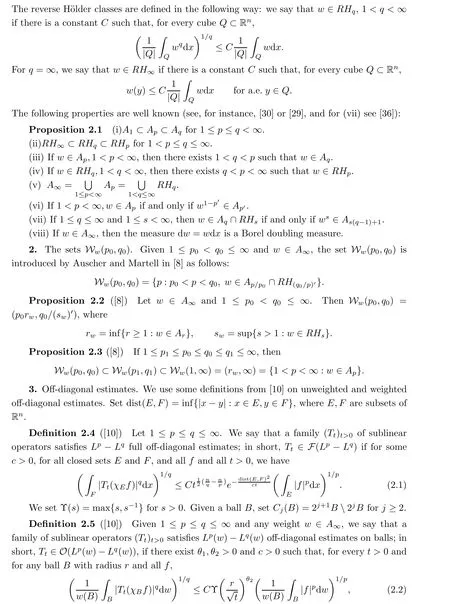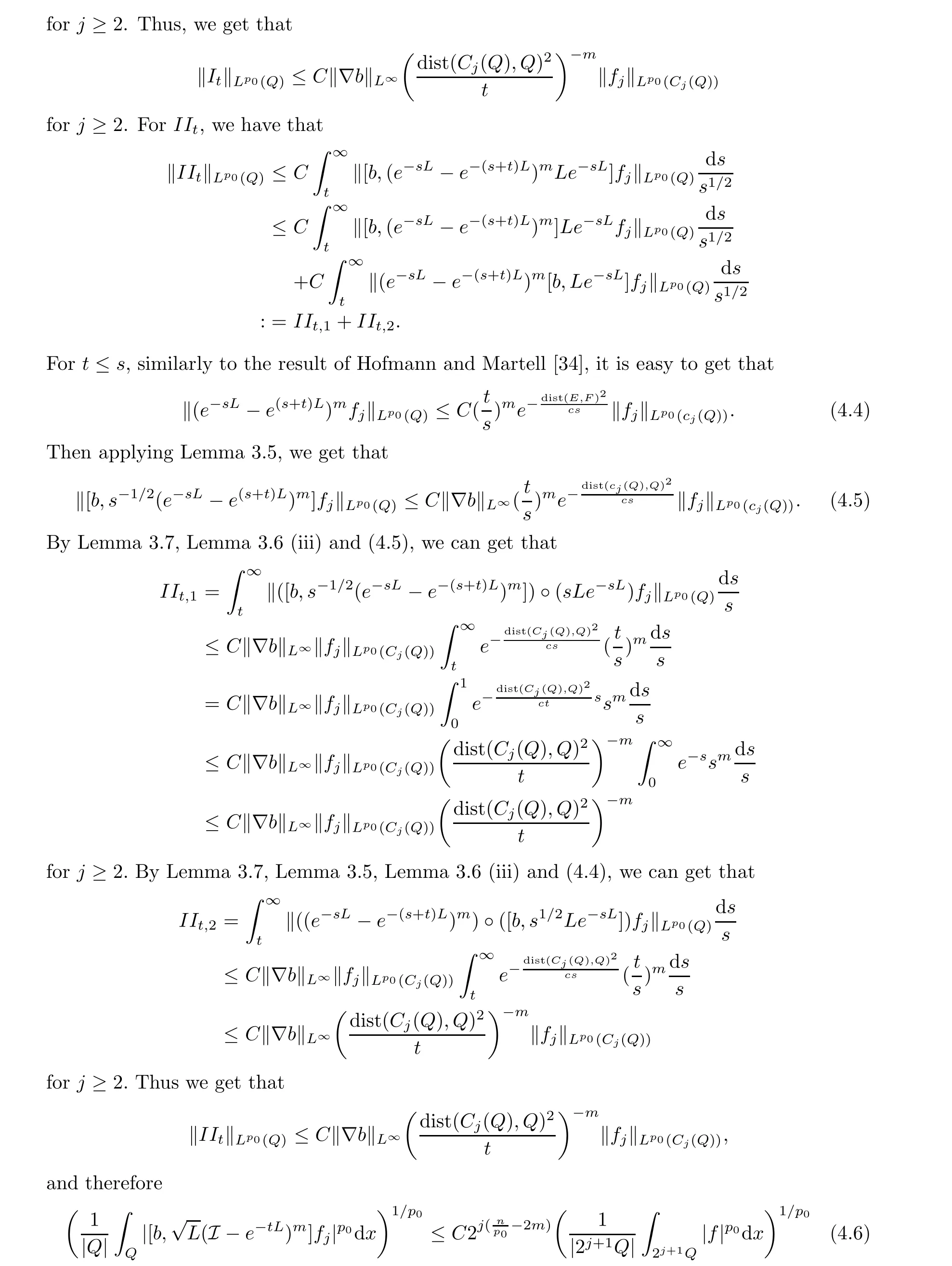Weighted norm inequalities for commutators of the Kato square root of second order elliptic operators on Rn
2022-08-25YanpingCHEN陈艳萍
Yanping CHEN(陈艳萍)
Department of Applied Mathematics,School of Mathematics and Physics,University of Science and Technology Beijing,Beijing 100083,China E-mail : gyanpingch@126.com
Yong DING (丁勇)
Laboratory of Mathematics and Complea Sgystems,School of Mathematical Sciences,Beijing Normal University,Ministry of Education of China,Beijing 100875,China E-mail: dingy@bnu.edu.cn
Kai ZHU(朱凯)+
School of Mathematical Sciences,University of Chinese Academg of Sciences,Beijing 100049,China E-mail: zhukai@ucas.ac.cn
1 Introduction
Let A be an n×n matrix of complex, L∞-valued coefficients defined on Rn. We assume that A satisfies the ellipticity (or “accretivity”)condition


and he generalised the result to n-dimensional Calder´on commutators. The Calder´on commutator appeared in Calder´on’s construction of an algebra of singular integral operators suitable for the treatment of partial differential operators with merely Lipschitz coefficients [14].Calder´on showed the relationship between Calder´on commutators and Cauchy integrals on Lipschitz curves in [15]. Many authors have made important progress on these commutators([16, 21, 22, 32]).


where C depends only on the dimension n, and ˜C depends on n,p and the Apconstant of w.
In [2], Auscher presented two criteria for Lpboundedness of “non-integral” operators: one was a simpler version of a theorem by Blunck and Kunstmann [12] via the Calder´on-Zygmund decomposition, and the other one a criterion of Auscher, Coulhon, Duong and Hofmann [4] via a good-λ inequality.
Such theorems are extended in[8]to obtain weighted Lpbounds for“non-integral”operators and their commutators with BMO functions. Here “non-integral”means that they do not have an integral representation by a kernel with size estimates, so that they may not be bounded on all Lpspaces for 1 <p <∞, and so the weight condition Apis generalized to a class of weight called Ww(·,·) (see [8]).
Then, Auscher and Martell [9] developed a theory of off-diagonal estimates and made a thorough study of weighted off-diagonal estimates on balls for the semigroups generated by the second order elliptic operators L, and as an application, they obtained in [10] weighted estimates with sharp or nearly sharp ranges of p including


2 Notations and Definitions





3 Some Lemmas
In this section we provide some Lemmas that are crucial in the proof of the main theorem.Let M denote the Hardy-Littlewood maximal operator. First, we give a two-parameter good-λ estimate which is a consequence of Theorem 3.1 and Remark 3.6 in [8].




4 Proof of Theorem 1.1







(these happen all the time in our applications), (1.5) can be obtained by using an extended version of Lemma 3.1 as in the previous case(switch balls to cubes)and(4.21),with underlying measure dµ=dw, and with no weight whenever µ(Rn)≤∞.
To verify (4.19)and(4.20), it suffices to use a proof similar to that of (4.1)and(4.2)in the weighted case by systematically changing dx to dw, off-diagonal estimates with respect to dx by those with respect to dw given the choice of p0,q0. It is enough to point out the following:
(i) In the proof of (4.1) and (4.2), Lemma 3.4 and Lemma 3.5 have weighted analogues which can be obtained by using the same proof of Lemma 3.1 and Lemma 3.2 in [17] as in the weighted case. Also, (4.4) has a weighted analogue, as can be seen by checking the proof in[34].






猜你喜欢
杂志排行
Acta Mathematica Scientia(English Series)的其它文章
- ITERATIVE ALGORITHMS FOR SYSTEM OF VARIATIONAL INCLUSIONS IN HADAMARD MANIFOLDS*
- Time analyticity for the heat equation on gradient shrinking Ricci solitons
- The metric generalized inverse and its single-value selection in the pricing of contingent claims in an incomplete financial market
- The global combined quasi-neutral and zero-electron-mass limit of non-isentropic Euler-Poisson systems
- Some further results for holomorphic maps on parabolic Riemann surfaces
- Global well-posedness of the 2D Boussinesq equations with partial dissipation
